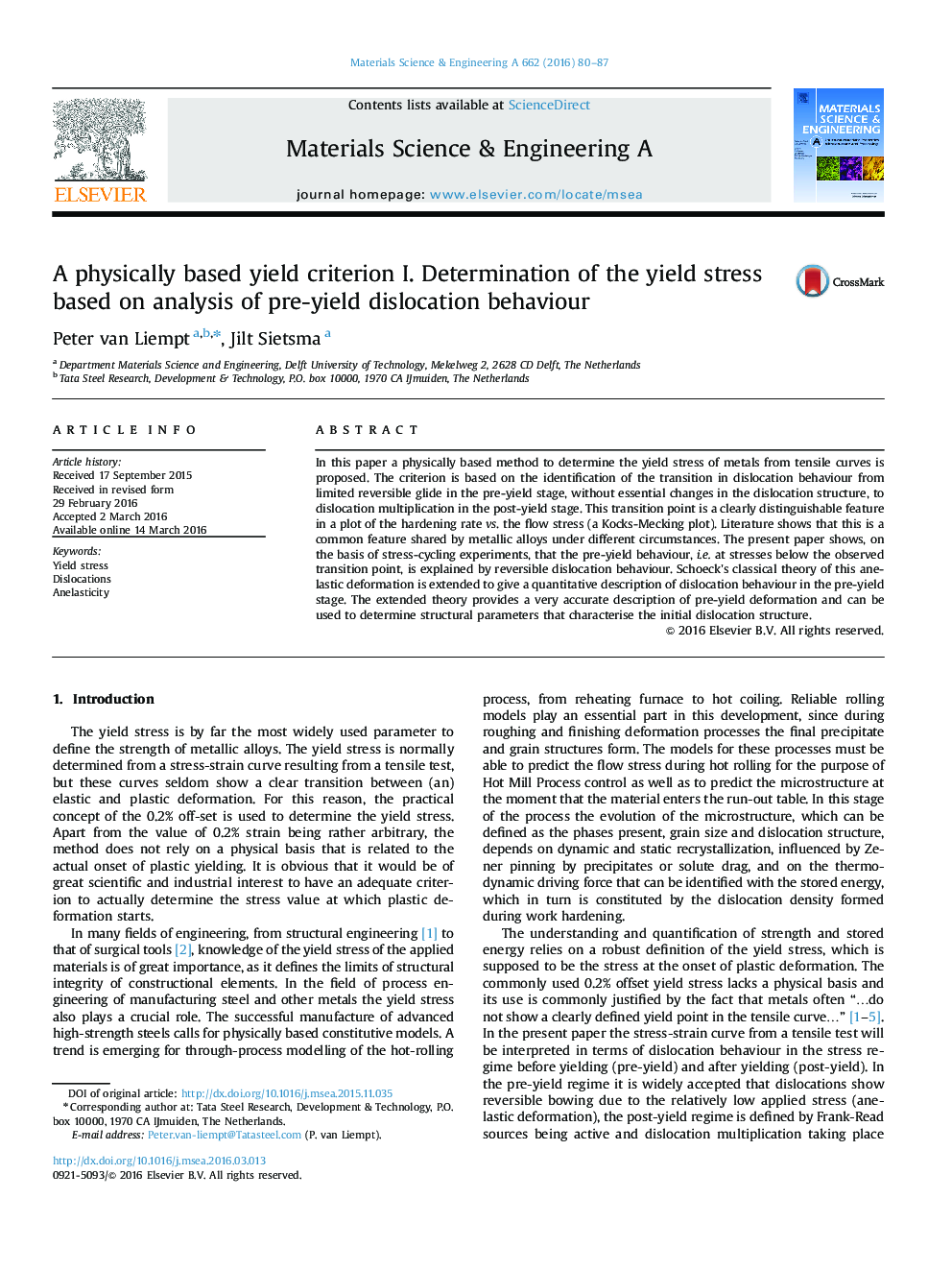| Article ID | Journal | Published Year | Pages | File Type |
|---|---|---|---|---|
| 1573440 | Materials Science and Engineering: A | 2016 | 8 Pages |
Abstract
In this paper a physically based method to determine the yield stress of metals from tensile curves is proposed. The criterion is based on the identification of the transition in dislocation behaviour from limited reversible glide in the pre-yield stage, without essential changes in the dislocation structure, to dislocation multiplication in the post-yield stage. This transition point is a clearly distinguishable feature in a plot of the hardening rate vs. the flow stress (a Kocks-Mecking plot). Literature shows that this is a common feature shared by metallic alloys under different circumstances. The present paper shows, on the basis of stress-cycling experiments, that the pre-yield behaviour, i.e. at stresses below the observed transition point, is explained by reversible dislocation behaviour. Schoeck's classical theory of this anelastic deformation is extended to give a quantitative description of dislocation behaviour in the pre-yield stage. The extended theory provides a very accurate description of pre-yield deformation and can be used to determine structural parameters that characterise the initial dislocation structure.
Keywords
Related Topics
Physical Sciences and Engineering
Materials Science
Materials Science (General)
Authors
Peter van Liempt, Jilt Sietsma,
